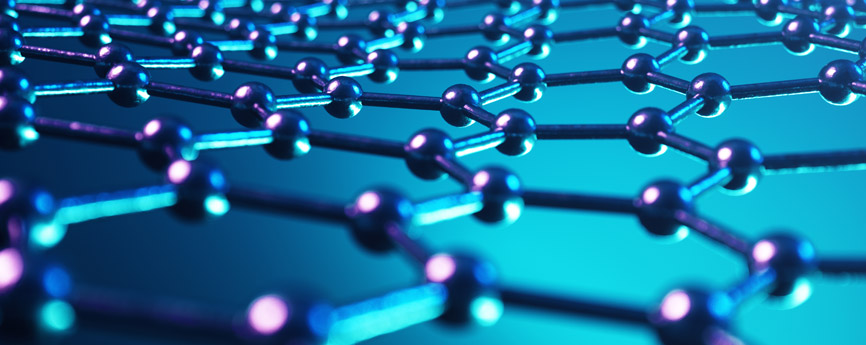Everything you need to know about nanomaterials
[

]
Throughout history, human beings have sought in nature the supplies we need to survive and develop as a species. Thanks to technology, we no longer need to meet our needs exclusively with raw materials, but are instead able to create materials from scratch to cover shortages more effectively.
One of the most innovative creations in this area are nanomaterials; without knowing it, they were our allies even before having been “discovered”. In their beginnings, nanomaterials occurred unintentionally and were created from chemical reactions invisible to the human eye. An interesting example of this is Damascus steel. This material was used during the 13th century to make the strongest and sharpest weapons. What the blacksmiths did not know is that, due to their slow casting and cooling technique, the blade was covered in carbon nanoparticles. This gave it its incredible properties, so much so that this steel took on a mythical nature.
In 1956, the father of nanotechnology, Richard Feynman, highlighted in his famous speech “There’s Plenty of Room at the Bottom”, the novel qualities of the smallest particles and sparked the scientific community’s interest. As a result, this promising field started to be studied in depth. Scientific curiosity along with optimised microscopes meant we could observe the behaviour of nanoparticles and use them to our advantage.
What is a nanomaterial?
Its scientific definition goes beyond the size of its dimensions. There are certain criteria that it must meet;
- It has unique qualities.
First of all, nanomaterials differ from “normal” materials because of this characteristic; the particles behave differently on a microscale. In other words, when reduced to this size, they have properties that are impossible to achieve on their regular scale.
After years of research, it has been shown that these properties are due to three peculiar characteristics that all nanomaterials have; the tiny dimension of the particles, the way the structures interact with each other and the large number of fractions that the small atoms make up.
- It scientifically manipulates the molecular structure.
Once microscopes made it possible to observe the nanometric structure of these materials, it was possible to replicate it in the laboratory. This process consists of reducing a material from its natural size, or finding the exact combination of atoms that resembles its nanostructure. It is then possible to alter their order to improve their capacities, thus creating a “tailor-made” material.
- It can be made of different materials.
There are different types of nanomaterials. They are classified according to their composition. They include:
- Organic nanomaterials: They are composed of nanomaterials derived from carbon (a good example is carbon nanotubes)
- Inorganic nanomaterials: These consist of nanomaterials whose properties come from oxidation caused by metal
- Hybrid nanomaterials: As the name suggests, these are materials made up of a combination of the two previous types.
- Its uses and applications are endless.
As we have mentioned, the discovery of nanomaterials changed the rules of the game. Engineering no longer has to adapt to the materials available, we can now design a surface that is exactly tailored to our needs. With this in mind, let’s touch on the solutions and benefits that nanomaterials offer.
So far, we have seen that nanomaterials can be applied to optimise almost all aspects of our lives; in sport (they are used to create more resistant equipment), in optics, to give glasses the protection they need, in medicine, testing gold nanoparticles to treat different diseases, and in construction, reinforcing structures with carbon-based nanomaterials. So the possible applications seem endless.
However, the most researched field so far is that of chemistry. Surfaces are designed to act as catalysts, whose job is to host chemical reactions. These reactions result in the creation of new compounds that possess highly desirable qualities. One of them is self-disinfection. Nanomaterials mean that a run-of-the-mill surface can clean itself self-sufficiently through the process of photocatalysis. Moreover, it has been found that there are nanomaterials that can be used to create antiseptic fabrics due to their germicidal and fungicidal properties.
Bibliography
Self-Cleaning Glass Saves Time, Money, and Water. (2010). Buildings. Obtenido de https://www.buildings.com/articles/33707/self-cleaning-glass-saves-time-money-and-water
Suárez, B. P. (2016). La Nanotecnología para el Tratamiento de las Aguas. Iagua. Obtenido de https://www.iagua.es/blogs/baltasar-penate/nanotecnologia-tratamiento-aguas
Tebaldi, M. L., Belardi, R. M., & Montoro, S. R. (2016). Design and Applications of Nanostructured Polymer Blends and Nanocomposite Systems. Micro and Nano Technologies, 155-169. Obtenido de https://www.sciencedirect.com/science/article/pii/B9780323394086000194
UBUinvestiga. (24 de Septiembre de 2020). Historia de los nanomateriales | Una historia sobre la evolución humana y los avances tecnológicos. Obtenido de Youtube: https://www.youtube.com/watch?v=LROeJfRtVkc
Talk to our team.
If you want to know more about our [i]solutions, contact us.

